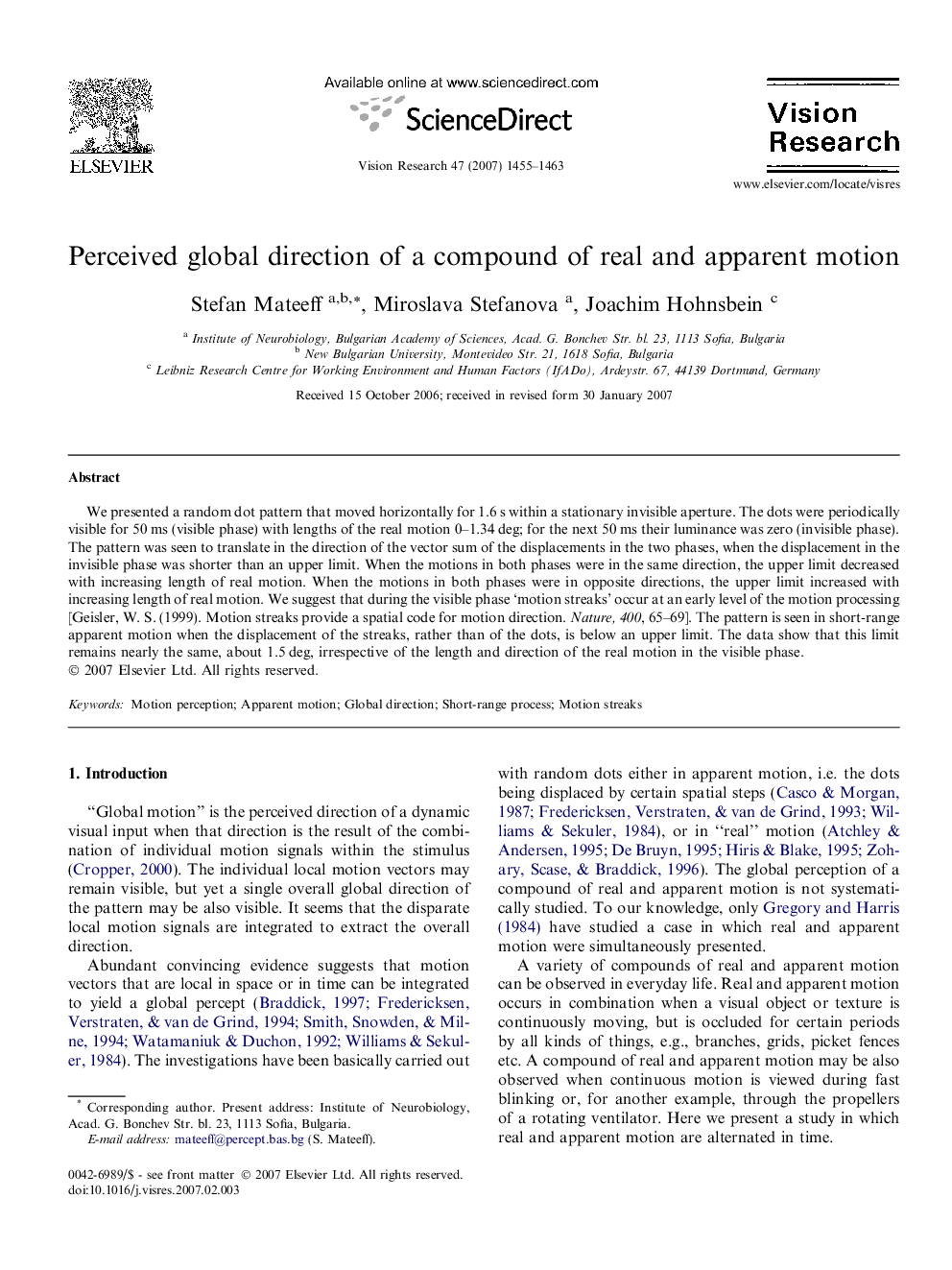| Article ID | Journal | Published Year | Pages | File Type |
|---|---|---|---|---|
| 4035707 | Vision Research | 2007 | 9 Pages |
We presented a random dot pattern that moved horizontally for 1.6 s within a stationary invisible aperture. The dots were periodically visible for 50 ms (visible phase) with lengths of the real motion 0–1.34 deg; for the next 50 ms their luminance was zero (invisible phase). The pattern was seen to translate in the direction of the vector sum of the displacements in the two phases, when the displacement in the invisible phase was shorter than an upper limit. When the motions in both phases were in the same direction, the upper limit decreased with increasing length of real motion. When the motions in both phases were in opposite directions, the upper limit increased with increasing length of real motion. We suggest that during the visible phase ‘motion streaks’ occur at an early level of the motion processing [Geisler, W. S. (1999). Motion streaks provide a spatial code for motion direction. Nature, 400, 65–69]. The pattern is seen in short-range apparent motion when the displacement of the streaks, rather than of the dots, is below an upper limit. The data show that this limit remains nearly the same, about 1.5 deg, irrespective of the length and direction of the real motion in the visible phase.
